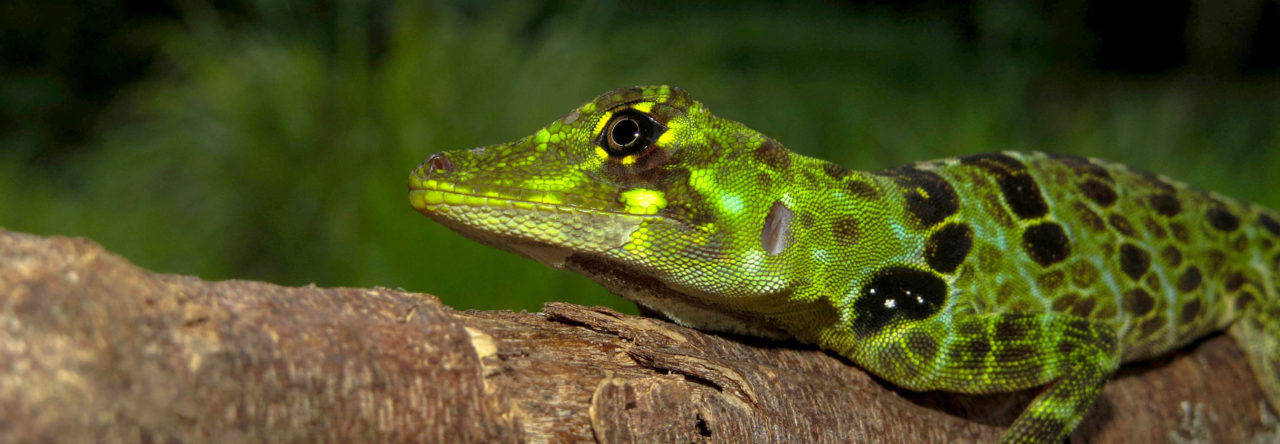
In my science lab with my little green friend. This photo will actually be on the back cover of my upcoming book!
As a regular reader of Anole Annals and a subscriber to the Twitter feed, I am honored to have the opportunity to write this post. For those who might remember, I am the elementary school science teacher in Princeton, NJ who made international news (and a mention on Anole Annals) when one of my kindergarten students brought me a juvenile Anolis carolinensis that her mother found in a bundle of salad greens. I am happy to report that “Green Fruit Loop” is still doing well in a spacious terrarium, and I have considered the logistics of returning her to the wild once she’s fully grown. Of course, from what I’ve been reading about her place of origin (south Florida), I’ll have to make sure I find a spot with tall trees, to make sure she has refuge from Anolis sagrei.

I’ve gotten into the habit of referring to Green Fruit Loop as a “she,” but perhaps an anole specialist could make an accurate determination?
My students continue to be enthralled with our surprise classroom companion, and I have been considering ways to include these children in a scientific investigation on color change. We have a second terrarium of adopted Anolis carolinensis (my momentary fame made me a magnet for unwanted pets), and even though I have told my students that anoles don’t assume specific colors to blend in with their backgrounds, this group was almost exclusively green when housed with plants, but since a fungal disease eliminated all vegetation over the winter, these anoles now remain perpetually brown among the rocks and woodwork.
These observations, which my students have used as evidence that Carolina anoles do, in fact, change color to camouflage (contrary to what their teacher tells them), have prompted me to consider a long-term study, in which several basking platforms will be painted different colors and anoles that use them will be photographed at multiple intervals per day. For example, one platform might be green, one brown, one white, and one black, and a camera on a timer will take photographs of each platform hourly. We could then compare these photographs over time, determine which individuals are exhibiting certain colors on certain platforms, and possibly draw conclusions from what we observe. I recently obtained a grant from the American Society of Plant Biologists to build two large habitats for tropical plants, so this would be an ideal location to house additional groups of anoles for this experiment to proceed.
If anybody has suggestions for the colors and materials that we might use for basking platforms (I am planning on four per habitat, each under its own light), as well as any possible modifications to this experiment for greater scientific merit, please feel free to comment on this post or write to me at memarkeastburn@gmail.com. Of course, animal welfare is always the highest priority in any of my educational projects, and my group of adopted anoles will never be housed with any field-collected specimens (like Green Fruit Loop) to minimize possible spread of parasites and disease.
Once this experiment gets going, please check in and see what my students are learning on Twitter @markeastburn or at my website http://www.teacherturtles.com. Thank you for reading!















